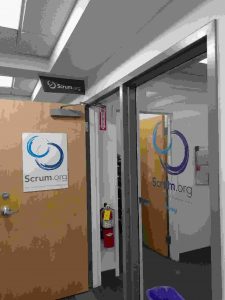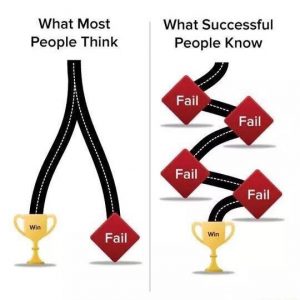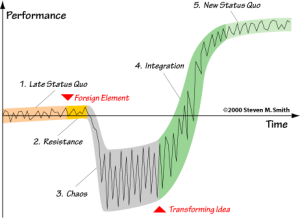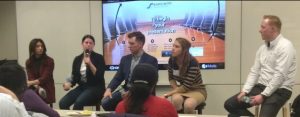The time had finally come! I had been looking forward to this moment for almost 2 years: to be able to fulfill an invitation extended to me to attend the Professional Scrum Developer (PSD) Train-the-Trainer (TTT) Event which was essential for obtaining my Professional Scrum Trainer (PST) license to teach Scrum.org classes. As an added bonus, this particular event was taking place at the Scrum.org headquarters! What an amazing opportunity.
Normally the TTT is a 5-day class for TTT candidates, which includes the 2-day PSF course followed by the PSD course. I had also heard in the community that the students in the courses are all PST candidates, so meta-questions could be asked and answered while the class was progressing.
This particular session was much, much different. First, the session was scheduled close to the Memorial Day holiday. So due to that and other scheduling complexities, the PSF was removed from the session, and the remaining days were lengthened past the normal stop time. Specifically, 2 hours per night longer, so we were in for 10+-hour days of intense training. Also, the participants for this event included non-PST candidates, so to respect these individuals the PST candidates had to reserve the how-to-teach meta-questions until after each regular session.
There were also three VIPs in the room. The class itself was taught by one of the most talented technical trainers on the face of the Earth, Richard Hundhausen, who observes just about every detail in his classes. Dave West, CEO and Product Owner at Scrum.org, gave us an awesome intro on the first day on the history of the PSD class and how it formed an essential part of the organization as it exists today, and then observed the class from the back corner of the room during the mornings. The third was Daphne Harris, Program Manager at Scrum.org and Director of the Professional Scrum Trainer Program, who became a full participating student even with her self-proclaimed non-technical background. No pressure, right 🙂 ?
At this point, I took a step back to collect my thoughts:
Do what you have always done in these situations, John. Focus, practice what you value, be yourself, be grateful, and have fun. This is how you have built up your amazing resilience to get to this point. You will do fine!

Our training environment was as expected from a professional training facility. To those who are expecting the HQ of Scrum to be this center of commerce in the middle of the Boston metropolis, think again. Burlington, MA is like any other suburb of the Eastern or Midwest US, and the office itself is on the top floor of a three-story building on the side of a hill that is shared by other small businesses. I think my dentist has a more elaborate building. The office is divided into two sections: Administrative where most of the associates work, and Training where we spent the bulk of our time. Our training room was large enough to fit the compliment of 16 students and 2 trainers, and had enough information radiator surfaces like whiteboards and poster-size easels. There was also a kitchen area, a small round table with a projector, and picture windows on one side. We sat at round tables just large enough to fit 4 technically-minded students using laptops and training material, and equipped with auxiliary extension cords for our electronics to be used during the class (the PSD and other classes not requiring electronics is normally not held at the HQ so this is why we needed the extra equipment). Overall this was a comfortable, safe environment to hold a training class.
The day sessions were packed with Scrum and technical content. This particular class was centered on the Microsoft toolset, however the PSD is also offered on the Java platform and platform-agnostic versions. Of course the success depended heavily on the student participation represented by countries from every corner of the world: Switzerland, The Philippines, Brazil and China to name a few. Day one was reserved for fundamental scrum, and to self-organize into the three- and four-person teams to contribute our simulated sprint work for the 3 days. The members of my team were already active Professional Scrum Trainers looking to expand their certifications. Joel Silberman from the Boston area and John Gillespie from NYC. We collectively called ourselves J-Cubd (pronounded “jay-cubed”, spelling intended, which was an attempt for 3 experienced guys to be hip and cool). We did not get to any sprint work on day one since the students were asking some good questions on the essential scrum topics. Once the lesson portion of the class was finished around 5:00 we took a short break for the 4 non-PST students to depart for the day, and rest to transition to the evening session.
The format of the evening session was a retrospective for each candidate to reflect on what went well, what could have been improved, and other meta-questions that would enhance the experience if they were to teach the class. Rich took notes, commented on the feedback, and answered the questions with his wealth of experiences at hand. But wait, what’s this? Rich is replacing the projector with a small camera and placing an X at the front of the room with painter’s tape. Then he explains that each of us is to record a video from the X where we will state our name and that we are PST candidates from our respective cities, and to poll the audience for questions. Rich will then act as a student who will ask a question which then we much answer. After we answer, the floor is opened to the remaining candidates acting as students who can ask follow-up questions in the same line as the original question. Wow!! First, I’m exhausted from the day’s class, and I also learned late in the day that my wife was admitted to the emergency room from a doctor’s visit back in Columbus (she’s OK now). This is the last thing I needed! The goal was for each candidate to record at least 2 videos within the three days (to be seen by God knows who). My question: “How should a team handle tech debt on the Product Backlog”. When I recorded the video I had no idea what I said, but after seeing the video I was surprised that I handled answers and feedback better than expected. If I had to do it again, I would definitely answer the question better, but honestly, I was not at all in the frame of mind or prepared to answer any appropriate question. So in retrospect, the conditions surrounding the recording could not have been much worse (a good training exercise). I made it through within my 5-minute timebox, though. I’m exhausted! Day one was over, and the only thing on my mind after I arrived back at my hotel room around 8:00 was to sleep (after having dinner) to prepare for day 2. Day 2 started with sprint 1. Our product was a command-line version of the popular board game, Battleship, implemented as a Visual Studio project, complete with defects, code smells, a clunky unit test harness and ATDD test project, ASCII art of an explosion in the shape of a strawberry, and a below average single-user experience with a computer opponent that hid its ships in the same places every game. Our backlog was prioritized by our Product Owner (Rich) in Visual Studio Team Services (VSTS), which also included our Wiki where we documented our Definition of Done and Definition of a Bug. We had previously refined the backlog a bit and provided estimates. The three of us *crushed* sprint 1. No literally! We produced absolutely no value for our Product Owner. Our sprint 1 was an embarrassment to the Product Owner and stakeholders (the rest of the class). Rich made this result an example for the rest of the day and into day 3 by periodically pointing us out and saying,
“A table full of trainers, produced no value for sprint 1.”
The remainder of the day consisted of light topics including Application Lifecycle Management, various quality and testing techniques, and the start of various build automation and deployment topics. Again the training candidates had the retrospective and video recording session. My question: “Why would a Professional Scrum Development Team not use code branches?” Again, a not-so-easy question when talking with a room full of trainer candidates and an instructor who notices everything. I fumbled through the answer again and gave myself some grateful that I made it through another video. My two were done! The remainder of the videos were not much value to me. I did ask a couple follow-up questions from some of the others (which I did on day one also), but I was still so exhausted that I was again just ready for food and another night’s sleep. I checked out of my hotel room on the start of Day 3 and headed to the Scrum.org HQ in my rental car for the final day of training. Topics of the day included ways to produce quality code (refactoring, SOLID patterns, measuring techniques like coverage), emergent architectures, and other ways to become a high-performing scrum team. We also performed our second sprint (in the morning), and we produced some value! Yea, us! We also fielded the feedback appropriately with the stakeholders. Overall a great sprint and great day. I actually had to leave before the session ended for the airport fighting the Boston rush-hour traffic. I am pretty sure that I incurred several fines by dodging the now fully electronic MassDOT toll system since I did not have a transponder. I’m glad I had a nonstop flight home to Columbus. My plans for the day after the three-day experience were to stay home and reflect on the whole experience. How blessed I was to to be a part of it all!
A few days later I received an email from Rich, which turned out to be the most valuable part of the whole class: feedback on my performance and participation in the class! The feedback I received was overall positive. My personable and friendly attitude as I presented and that I have a very good understanding of the Scrum framework were noted, as well as a need to improve on a little on my delivery and tightening of my terminology and explaining why the framework works. Overall, everyone saw “a lot of potential” for me to be a PST, and would hope that I will move forward with the PST process.
Yes!! You bet I will! I big accomplishment. Now I continue with taking and passing assessments, talking with peers (Scrum.org stewards), recording more videos on my own, and plugging into the community as part of my journey.
I highly recommend pursuing the TTT session if you are invited. The experience itself is honorable, and you will be grateful that you put in the work that prepares you for the moment.





